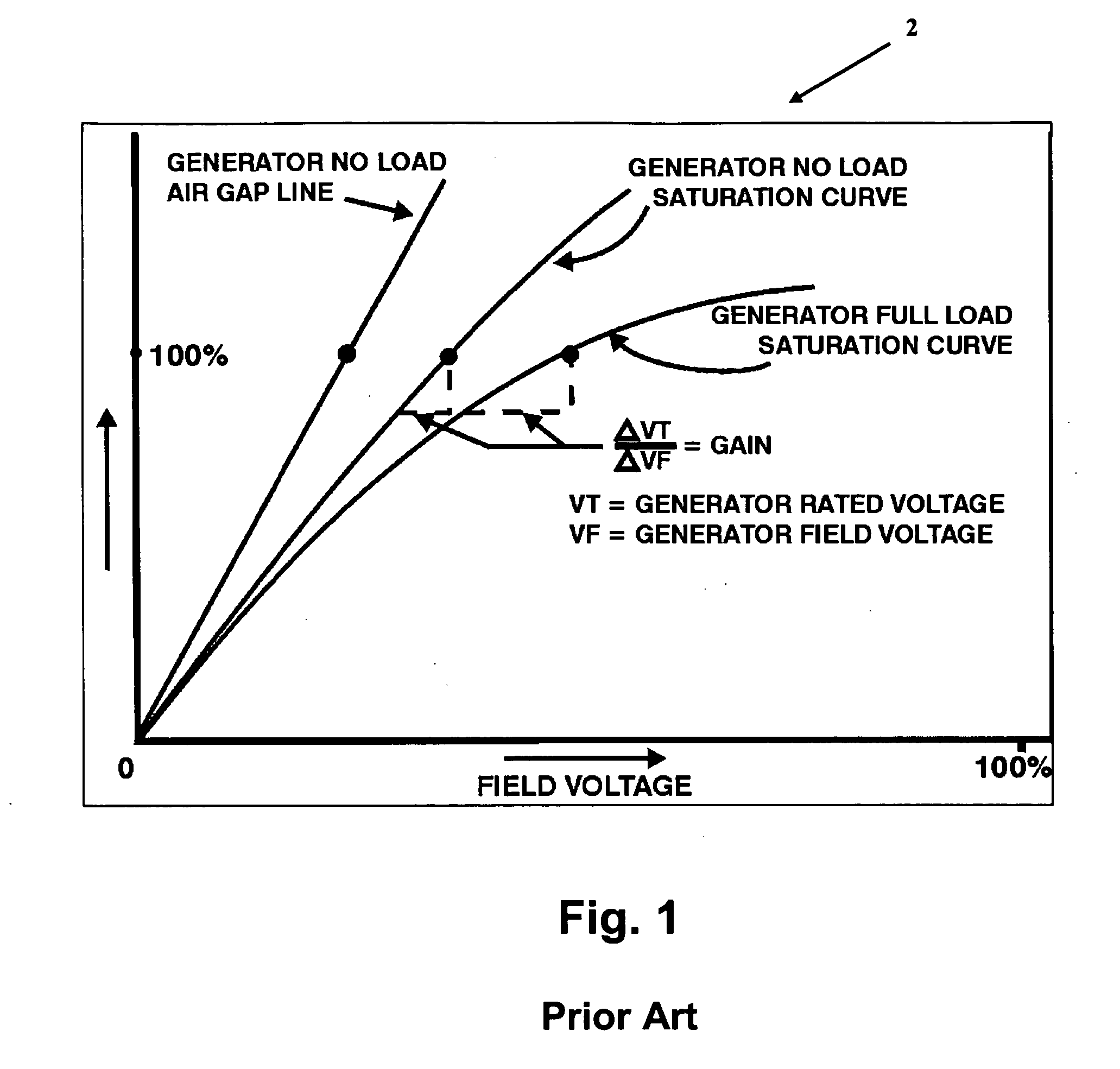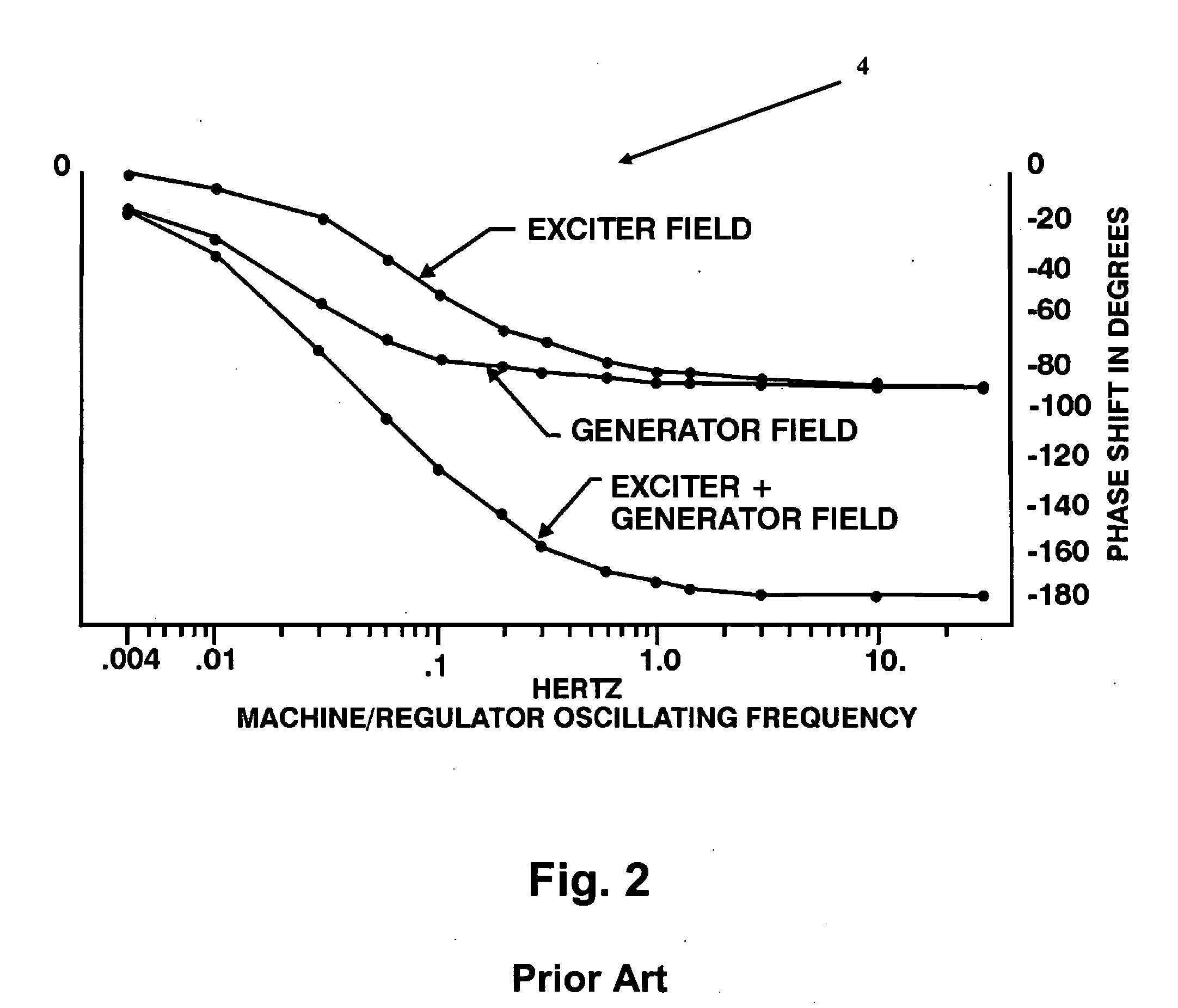Digital Excitation Control System Utilizing Swarm Intelligence and An Associated Method of Use
a control system and digital excitation technology, applied in the direction of electric controllers, dynamo-electric converter control, instruments, etc., can solve the problems of regulating the field strength of main generators, and spherical swarms in main generator outpu
- Summary
- Abstract
- Description
- Claims
- Application Information
AI Technical Summary
Benefits of technology
Problems solved by technology
Method used
Image
Examples
Embodiment Construction
[0038]In the following detailed description, numerous exemplary specific details are set forth in order to provide a thorough understanding of the invention. However, it will be understood by those skilled in the art that the present invention may be practiced without these specific details, or with various modifications of the details. In other instances, well known methods, procedures, and components have not been described in detail so as not to obscure the present invention.
[0039]Referring now to FIG. 3, the basic block diagram of a self-exciting excitation control system with exemplary PID block utilized in an automatic voltage regulator control loop is generally indicated by numeral 10. In addition to the PID block 20, the system loop gain KG 18 provides an adjustable term to compensate for variations in system input voltage to a power converting bridge. The transfer function Gc(s) of the PID controller 20 may be expressed as
GC=KGVP(KP+KIs+KDs1+TDs),
where KG is loop gain, KP i...
PUM
 Login to View More
Login to View More Abstract
Description
Claims
Application Information
 Login to View More
Login to View More - R&D
- Intellectual Property
- Life Sciences
- Materials
- Tech Scout
- Unparalleled Data Quality
- Higher Quality Content
- 60% Fewer Hallucinations
Browse by: Latest US Patents, China's latest patents, Technical Efficacy Thesaurus, Application Domain, Technology Topic, Popular Technical Reports.
© 2025 PatSnap. All rights reserved.Legal|Privacy policy|Modern Slavery Act Transparency Statement|Sitemap|About US| Contact US: help@patsnap.com



